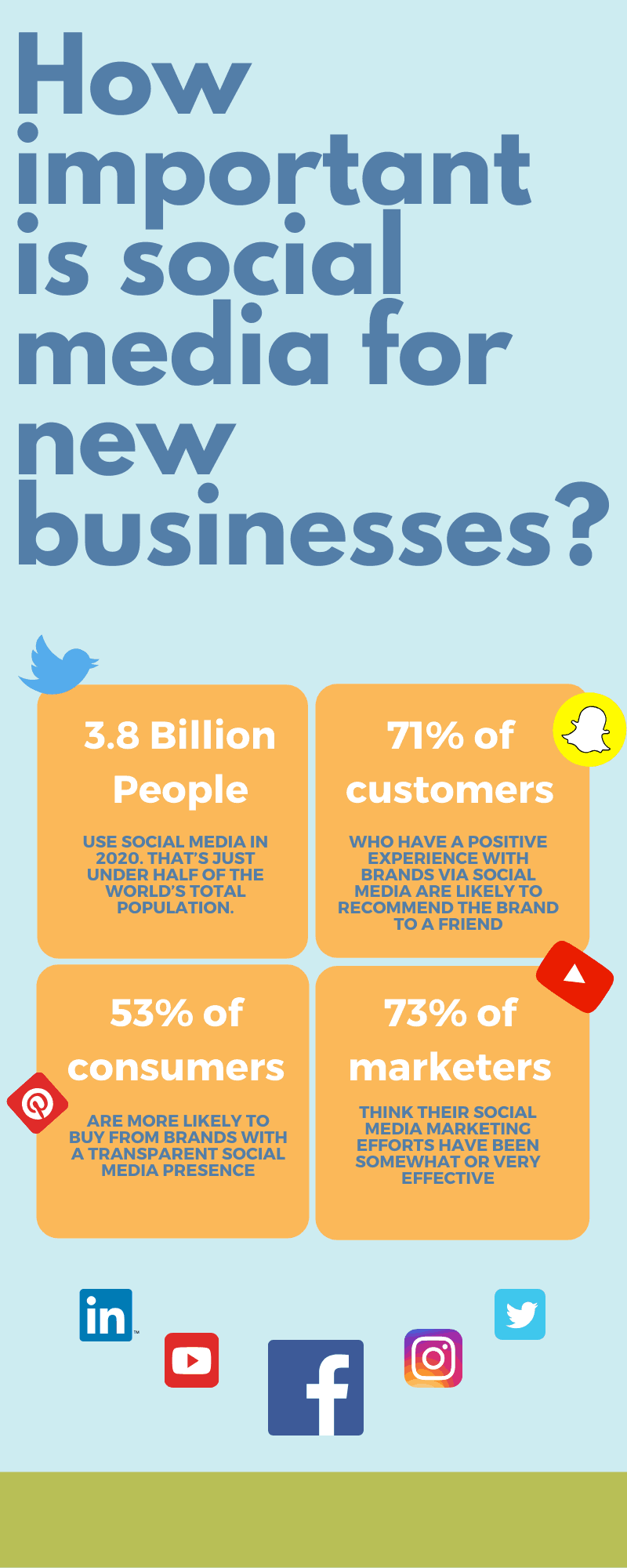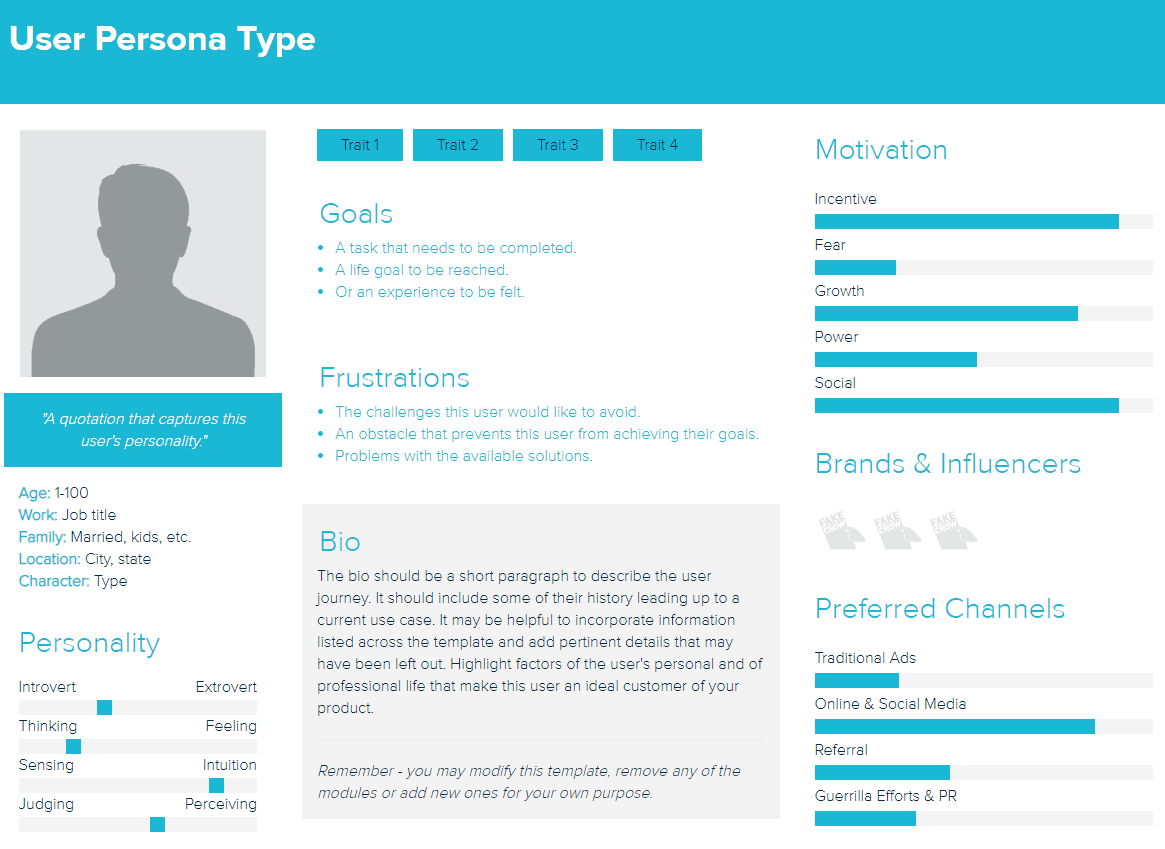
Developing a social media strategy as a new brand is a mammoth task. You’re starting from square one, which means you don’t have a lot of data to inform the road ahead—and that makes things difficult.
The first challenge you’re faced with is figuring out which social networks you want to focus your energy on. You have plenty of choices between incumbents like Instagram and Facebook plus the up-and-comers like TikTok.
The question then becomes where to spend your time – you need to balance getting in front of your users (wherever they are) with your time and sanity. The good news is that you don’t need to be everywhere at once, but you will need to evaluate which platforms are worth your time.
In this article, we’re going to be helping you to answer that question by showing you exactly how to evaluate potential social networks as a new company or brand.
The importance of social media
I probably don’t need to tell you how important social media is to your marketing strategy, but in case you need a quick reminder, just take a look at these statistics:
- 3.8 billion people use social media. That’s just under half of the world’s total population. (DataReportal)
- 71% of customers who have a positive experience with brands via social media are likely to recommend the brand to a friend (Lyfe Marketing)
- 53% of consumers are more likely to buy from brands with a transparent social media presence (SproutSocial)
- 73% of marketers think their social media marketing efforts have been somewhat or very effective (Buffer)
As you can see, social media marketing has a myriad of benefits. From a branding perspective, social media can be used to bolster your brand awareness and authority, improve customer loyalty, and increase customer satisfaction.
It also lets you reach potentially thousands of new customers, drive tons of traffic to your website, and generate, nurture, and convert more leads. All of that translates to more revenue and ultimately boosts your bottom line.
[code_snippet id=6]
But to really take advantage of all those benefits, you need to make sure you’re hitting the mark when it comes to your social strategy. With that in mind, let’s move on and look at how to start evaluating potential social networks.
Understanding your company and industry
The first step in choosing the social network you want to focus on as a new brand is to evaluate your company and industry. To figure out what the right platform for you is, you first need to identify exactly who you are as a brand and what you’re trying to achieve.
You need to look at your brand image, marketing goals, and—most importantly—who your customers are. Once you know that, you can start to think about what platform will best serve you and your customers in order to help you to achieve those goals.
A great place to start is to put together a buyer persona. Your buyer persona is a complete fictional representation of your ‘ideal’ customer. It should include things like:
- Relevant demographic details (i.e. income, age, nationality, ethnicity, etc)Behaviors
- Goals
- Values
- Hobbies
- Pain points
- Buying patterns
- The content they interact with
If you’re an existing brand, you can survey your existing customers to gather data about who they are and use this to put together your buyer persona. If you’re a brand new company with no existing customers, that might not be possible.
In the latter case, you can analyze other data available to you to inform your buyer persona. For example, you might use focus groups, or look at Google Analytics (if you have a website).
If you have literally nothing to go on, you at least have some idea of who you think your target customers are, so just use your intuition.
Finding where your customers are
Once you know who your customers are, you need to find out where they are. If you know what social media platforms they use, you know which platforms you can reach them on. A great way to do this is to spy on your competitors. Your competitors likely have similar buyer personas to you, so look at what social platforms they’re using—it’s probably where you want to be focusing your efforts, too.
For example, if your competitors are super active on Instagram, but they don’t seem to be bothering much with Facebook, it’s probably because Instagram is delivering the best results.
And don’t stop there. While you’re being nosey, you may as well take a look at the content they’re posting too and see if you can extract any useful insights from it. Analyze their best-performing posts and see how you can emulate them. Once you know what kind of content best serves your customers, you can figure out what platform is best to deliver that kind of content.
Evaluating the platforms
Now we’re done with the preliminaries, we can start to evaluate the different platforms available. The goal here is to match the information you’ve put together about your brand and target audience with what we know about different platforms to find the best places to invest your time.

69% of adults use Facebook, making it the second most popular social network, trailing only behind YouTube. Because of its huge reach, most businesses will want to have at least some presence on Facebook, but it’s especially useful for small, local businesses.
The reason it’s great for these types of businesses is that marketing on Facebook is more about person-to-person recommendations. Marketing through Facebook groups is an especially effective strategy.
Unlike many other platforms, it’s also popular across all age ranges and is the most used platform amongst those aged 65+ (46%). If you’re targeting an older demographic, Facebook should probably play a key role in your marketing strategy.
Instagram is a platform that can serve all business types well but, as it’s a very visual platform with a younger user base, it’s especially great for product-based businesses targeting younger customers. Fashion and fitness brands tend to do particularly well here.
75% of 18-to-24-year-olds and 57% of 25-to-30-year-olds use Instagram, compared to just 8% of those aged 65+.
While we’re on the topic, Pinterest is another highly visual platform worth considering. Unlike Instagram, it’s a much more female-centric platform, which makes it a great option for female fashion brands and other companies targeting women. 42% of women use Pinterest compared to just 15% of men.
Twitter has users across all age groups but is most popular amongst 18-24-year-olds (44%). Customers interact with Twitter differently than other social platforms and tend to use it to communicate directly with brands and keep up-to-date on news.
This makes it a useful platform for providing customer service. It’s a good option for service-based businesses and a great place to communicate with your customers and provide them with news and updates about your brand.
LinkedIn is great for service-based businesses but less so for products. It’s main strengths lie in helping companies grow brand awareness, recruit new team members, and build brand authority. If this aligns with your brand goals, this might be the best place to focus your efforts.
LinkedIn is more popular among professionals and users with higher levels of education. Around 50% of college graduates and people from high-income households use LinkedIn. This is compared to less than 10% of those in lower-income households or without a college education.
Youtube
YouTube can be great for all types of businesses. It has the largest reach of all social platforms and is popular across all age ranges. The most prolific YouTube users are those in the 25-29 age bracket (93%).
You don’t necessarily have to create your own content to market your brand on YouTube. Instead, you can partner with influencers whose following aligns with your target market. However, if you aren’t interested in partnerships and plan to create your own content it’s worth mentioning that Youtube will be extremely time-consuming to do well.
Other Social Platforms (Tik Tok, Snapchat, etc)
Aside from the above, there are a handful of other, newer social platforms that are worth looking into, such as Tik Tok and Snapchat. The majority of users on these platforms are from a younger demographic, mainly teens and early 20s. Snapchat, for example, is used by 73% of 18-24-year-olds compared to a measly 3% of those over 65.
The advantage of these platforms is that they have excellent viral potential and can be great for product-based brands.
Where to start
If you’re new to social media, or new to it from a business perspective then this guide was probably a bit overwhelming.
Here are a few tips to remember:
Firstly, it’s fine to start with a single platform but over time you need to expand – your goal is to improve your brand presence and your platforms should be dictated by where your users are.
Second, it’s fine to repurpose and reuse your marketing content across your social platforms. For example, you can repurpose your YouTube videos into blog posts, and share the links through Twitter and Facebook.
And finally, remember that your marketing strategy should be constantly evolving. Monitor your social media marketing performance and see which platform is performing the best. Then, use that to inform your strategy moving forward.
Interested In Working Together?
Introducing Delivered Social. We’re The Most-Rated Digital Agency In Surrey & Hampshire – We’ve Got To Be Doing Something Right.
Delivered Social is a digital marketing agency with one mission—to help businesses grow. We’re famous in Guildford and Portsmouth for our social clinics. We believe in free advice. We build lasting relationships because our team prides itself on being helpful, which our clients appreciate.
If you are looking for a new website or an agency to manage your social media presence, we can help.
If you need something slightly different, here's a super handy list of all our services, or you can always email us.





















